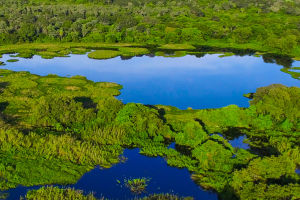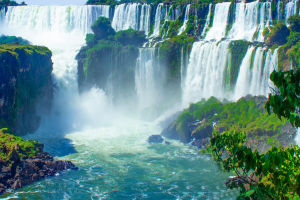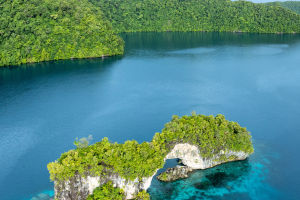The vibrant capital of Suriname, Paramaribo, is a place where nature and heritage coexist in charming harmony. For our Lykkers craving a destination that blends exotic greenery with cultural treasures, this city offers something unique.
One of its gems is the Palm Garden, a relaxing green oasis nestled within the historic core. Surrounded by landmarks, shaded paths, and melodic birdsong, it provides the perfect break in the heart of the city. Here's what to expect and how to explore this peaceful corner of Suriname.
Where It Is and How to Get There
Location:
The Palm Garden (Palmentuin) is located in central Paramaribo, just behind the Presidential Palace. It's part of the city's UNESCO-listed historic area, making it easily accessible on foot if you're already exploring the old town.
How to Reach:
From Johan Adolf Pengel International Airport, reach Paramaribo in approximately 45 minutes by taxi or bus. Within the city, taxis and minibuses are the most common forms of transportation. Walking is also ideal for visiting nearby attractions, as many are clustered together.
What to See and Do
The Palm Garden:
Planted in the late 1600s, this peaceful park is filled with towering royal palms, creating a shaded sanctuary perfect for strolling or resting.
Originally established by a Dutch governor on what was once a vegetable plot, it later became a private garden and then reopened to the public. Today, its wide pathways, swaying fronds, and historical elements make it a must-see.
Statue of Ruben:
Among the palm trees stands a touching statue dedicated to a young boy named Ruben, who tragically lost his life due to suffocation. The monument carries a message encouraging parents to care for their children, making it a meaningful stop for visitors.
Historic Elements:
You can still spot traces of the past here, including an old brick water gate and the grave of a governor's wife. While the garden itself is open to everyone, these elements add a layer of quiet reflection and history.
Nearby Highlights
The Presidential Palace:
Right next to the Palm Garden, this stately white mansion once served as the residence of Suriname's Dutch governors. Originally built entirely from wood, it was reinforced with stone around 1730.
Though it remains off-limits to the public, the palace continues to host official receptions and is an iconic feature of the capital.
Onafhankelijkheidsplein (Independence Square):
Just in front of the palace lies the Independence Square, a wide, leafy plaza framed by important government buildings, including the Ministry of Finance and the Justice Palace. It's the center of national celebrations and public events.
Bird Singing Contest:
Every Sunday morning, the square transforms into the site of one of Paramaribo's most unusual traditions—a singing contest among exotic birds. Locals bring cages and gather to listen to the melodic calls. Points are awarded based on each bird's performance and recorded on a scoreboard. It's a lively event that adds an unexpected charm to your visit.
Opening Hours and Entry Fees
Palm Garden:
- Opening Hours: Daily from sunrise to sunset
- Ticket Cost: Free entry
Bird Singing Contest (Independence Square):
- Time: Sunday mornings, starting early
- Cost: Free to watch
To Conclude
Paramaribo's Palm Garden and its surrounding landmarks offer a refreshing blend of greenery, cultural depth, and community spirit. From shady palm-lined paths to unique Sunday gatherings, this part of the city feels both timeless and vibrant.
For Lykkers seeking a slower-paced, authentic experience in Suriname, this peaceful corner is a perfect starting point. Be sure to include it on your itinerary—history and harmony await under the royal palms.


